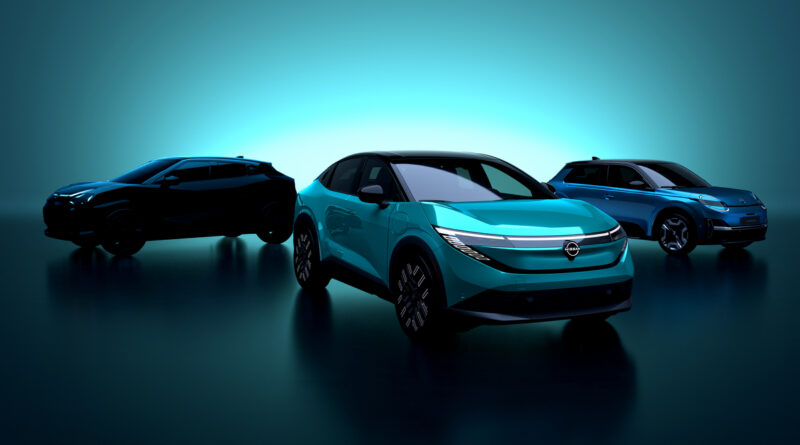
Nissan has long been one of the most recognisable names in the global electric-vehicle transition. In Australia the brand’s EV story sits between a pioneering past – embodied by the Leaf – and a forward-facing SUV future in the Ariya, while its e-POWER hybrid technology provides a third, pragmatic path for buyers not yet ready to go fully battery-electric.
This article reviews Nissan’s current and near-term EV offerings for the Australian market, explains the key technologies and ownership considerations for local buyers, and outlines what to watch for as Nissan rolls out next-generation models.
Current and upcoming models
Nissan Leaf
- Role and history: The Leaf is one of the first mass-market electric cars to reach Australian shores and remains a popular, practical choice for urban drivers. Its modest dimensions, familiar hatchback packaging and affordable running costs made it a de facto entry-level EV for many households.
- Battery and charging: Historically offered with two battery sizes (a standard and a longer-range “e+” pack), the Leaf relies on the CHAdeMO DC fast-charging standard – still supported in Australia but less ubiquitous than the CCS1 standard used by many newer EVs. That difference can affect access to rapid public charging and future compatibility.
- What’s next: Nissan has signalled that the next Leaf generation will adopt an SUV-like form factor, aligning with broader market demand for crossovers. Multiple industry sources have suggested a launch around mid‑decade; Australian timing will depend on Nissan’s global rollout and local homologation.
Nissan Ariya
- Role and platform: The Ariya is Nissan’s purpose-built electric SUV, designed from the outset as an EV rather than an ICE-derived model. It introduced the brand’s more modern EV architecture and a suite of powertrain, battery and software options.
- Variants: Globally the Ariya has been offered with a range of battery capacities and drivetrain configurations-single-motor rear-wheel-drive and dual-motor all-wheel-drive (marketed with Nissan’s e-4ORCE control). These provide differing combinations of performance and range to suit buyers’ priorities.
- Australian availability: The Ariya has been positioned as Nissan’s premium EV offering in Australia; supply and timing have varied by market but the model is intended to showcase Nissan’s next-generation EV technology locally.
e-POWER hybrids
- How it works: Nissan’s e-POWER is a series-hybrid arrangement where a small petrol engine generates electricity for the battery and electric motor. The wheels are driven solely by the motor, so drivers experience EV-like instant torque and regenerative braking without the need to plug in.
- Local models: e-POWER has been rolled out in Australia in models such as the QASHQAI, and it represents an attractive compromise for buyers seeking improved efficiency and refinement without range‑anxiety or charging infrastructure dependency.
Key features and technologies
Pioneering and practical tech
- The Leaf’s place in the market is less about headline range figures than its role normalising EV ownership for mainstream Australian drivers. It introduced many Australians to everyday EV practicality: simple operation, low running costs and quiet, smooth driving.
- The Ariya articulates Nissan’s vision for a mainstream electric SUV: more interior space, multiple battery options, and a software layer for connectivity and driver assistance.
Vehicle-to-Grid (V2G) capability
- Nissan was an early proponent of bidirectional charging and the Leaf has been used in V2G pilots and programs. In Australia the Leaf is among the factory-delivered EVs that can support V2G hardware and use cases, allowing owners to export energy back to the grid, support home backup power or participate in grid services – subject to compatible hardware and local regulatory arrangements.
- V2G is still an emerging market in Australia. Availability depends on compatible charging equipment, software and local policy frameworks; buyers interested in V2G should confirm capability and provider support before purchase.
Driver assistance and software
- Nissan packages advanced driver-assist features under its ProPILOT suite. Across the Leaf and Ariya you’ll find lane-centring assistance, adaptive cruise control, traffic-jam support and other semi-autonomous aids. The Ariya benefits from more recent hardware and software, including enhanced route-aware and navigation-linked functionality in some specifications.
Charging and infrastructure considerations
- Charging convenience and compatibility matter. The Leaf’s CHAdeMO inlet means owners rely on chargers that support that standard; while Australia still hosts CHAdeMO-capable sites, the broader market trend to CCS should be weighed by prospective buyers.
- The Ariya uses the CCS standard and supports faster DC charging rates, improving long-distance usability and access to new charger deployments across Australia.
- Home charging: both EV platforms support efficient overnight AC charging; installing a home charger remains a high-priority expense for most owners.
Warranty, servicing and aftersales
- Nissan has been active in promoting ownership incentives and warranties for its EVs in several markets. Some announcements and dealer programs have referenced extended coverage for high-voltage components when vehicles are serviced through Nissan’s authorised network – but terms vary by market and model year.
- Prospective buyers should confirm current warranty periods, battery warranties and any extended-care offers with Nissan Australia or their local dealer before purchase.
What this means for Australian buyers
- City commuters and first-time EV buyers: The Leaf remains an economical urban option, provided you are comfortable with its charging standard and the practical range of earlier generations.
- SUV buyers and those seeking newer EV tech: The Ariya targets buyers wanting a contemporary EV experience-more interior space, modern connectivity and improved charging interoperability.
- Buyers not ready for full BEV: e-POWER offers many of the feel benefits of electrified driving without the charging requirement, making it especially relevant in regions where fast public charging is sparse.
Final considerations
- Check charging compatibility (CHAdeMO vs CCS), local dealer inventory and available incentives in your state or territory. Australia’s EV landscape is evolving rapidly: charger rollouts, battery technologies and model availability continue to change year to year.
- Confirm warranty terms, battery coverage and service requirements with Nissan Australia. If V2G is a priority, ask about compatible hardware, software and participation programs.
Conclusion
Nissan’s Australian strategy bridges its legacy as an early EV pioneer with the realities of a market that has moved decisively toward SUVs and modern charging standards. The Leaf remains an important entry-point and a practical urban EV, though its CHAdeMO charging and ageing platform limit its longer-term competitiveness against newer CCS-based rivals. The Ariya represents Nissan’s bid to re-establish itself in the mainstream electric SUV segment with a more contemporary platform and broader appeal. Meanwhile, e-POWER provides a pragmatic hybrid alternative for buyers seeking EV-like driving without full electrification. For Australian consumers the choice comes down to charging needs, driving patterns, and whether buyers prioritise price and simplicity (Leaf), modern EV architecture and range/charge convenience (Ariya), or the convenience of a petrol-powered generator with electric drive feel (e-POWER).
What is the main difference between Nissan Leaf and Ariya?
The Leaf is a compact hatchback that helped popularise EVs; it is practical for urban driving but uses the CHAdeMO DC charging standard. The Ariya is a purpose-built electric SUV with more modern EV architecture, CCS charging compatibility and multiple battery/drivetrain options, making it better suited to long-distance use and current charging networks.
Does the Nissan Leaf support vehicle-to-grid (V2G)?
Yes – the Leaf has been used in V2G pilots and is one of the factory-delivered models that can support bidirectional charging, subject to compatible hardware, software and local program availability. V2G is still emerging in Australia, so availability and local support should be confirmed with providers.
What is e-POWER and which Nissan models in Australia use it?
e-POWER is a series-hybrid system where a petrol engine charges a battery that powers an electric motor; the wheels are driven electrically. In Australia, variants such as the QASHQAI e-POWER have been offered, providing EV-like driving characteristics without the need to plug in.
Which charging standard do Nissan EVs use and why does it matter?
Historically the Leaf uses CHAdeMO, while the Ariya uses the CCS standard. Charging standard matters because it affects access to fast public chargers and compatibility with the evolving Australian charging network; CCS is increasingly dominant among new EVs.
What warranty and service support does Nissan offer for its EVs in Australia?
Nissan provides manufacturer warranties and battery coverage, and has promoted extended service and warranty programmes in some markets. Specific terms – including any extended high-voltage warranties tied to servicing at authorised dealers – vary by model and region, so confirm current conditions with Nissan Australia or your local dealer.
About EV Evolution
EV Evolution is the leading online platform dedicated to Australian electric vehicle owners and enthusiasts. We foster a vibrant community, delivering essential EV news and insights, and enhancing user engagement through our innovative, AI-powered chatbot for dynamic discussions. Our mission is to empower Australian electric vehicle owners and enthusiasts by fostering a vibrant, AI-driven online community that connects, informs, and advances the nation’s electric vehicle landscape.




